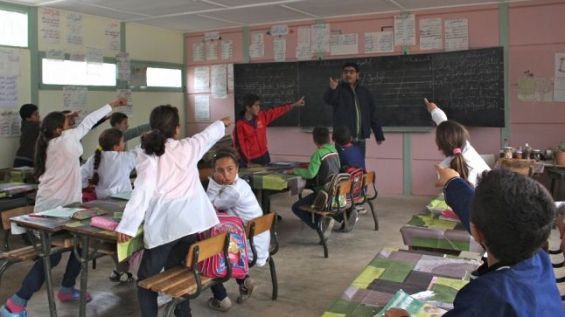What is your assessment of the performance of Moroccan students in the 2022 PISA ?
Unsurprisingly, it is a weak performance for Morocco. It is almost the same as that of 2018, with a proportional drop recorded in all three subjects. The decline was not limited to the marks scored by the Moroccan students, which are below average and low compared to the performance of students from developed countries. It is worth noting that, compared to 2018, the proportion of Moroccan students scoring below a baseline level of proficiency increased by five percentage points in mathematics; did not change significantly in reading; and did not change significantly in science. It’s disastrous.
What are the reasons behind this decline, according to you?
Students were, particularly, affected by the Covid-19 pandemic, during which schools were closed and classes were held online and not in the best of conditions. Consequently, these conditions are well reflected in the latest assessment.
In addition to the sanitary crisis, one of the other reasons is how the Moroccan education system works. Grade inflation for senior middle and high schoolers, to increase the number of students who succeed, as if we were in a competition, is a big problem. As a result, we are caught in the trap of making Moroccan students succeed instead of qualifying them to succeed.
For example, in 2021, high school students recorded a success rate of more than 80%, while it never exceeded 55% before that year. We know that the PISA survey focuses on 15-year-old students, who still have two more years left in high school. This skyrocketing success rate formed a group of students who had not mastered basic skills reaching this level of study, and they were the ones who were tested in PISA 2022.
There is another direct reason: the transition of the Moroccan education system from the teaching of scientific subjects in Arabic to French. This change has affected the performance of students in science. Many do not master French, and they must understand a subject taught in that language, which has created a double obstacle for learning the subject itself. We can still see this in the results, even though Morocco decided in 2022 to leave the language choice to schools to avoid said obstacles.
The crisis of contractual teachers who are on strike can also be blamed. Other structural problems linked to the Moroccan education system, common to all the tests that learners take, relate to the basic training of these teachers. This does not allow them to master the basic skills that qualify them to accomplish their tasks.
In Moroccan schools, the curriculum does not focus on core academic subjects. It is dispersed between courses overloaded with knowledge, without a knowledge development approach, meant to push students to develop critical thinking and solve complex problems...
There is another problem linked to time spent at school and in classes. Although it looks like Moroccan students have the longest school year or season, the reality is that they start school in October and finish at the end of April. This does not allow pupils to complete the curriculum thoroughly before moving on to the next level.
Other problems are further illustrated by the scale of a certain number of phenomena and certain practices inside and outside establishments.
Do you think that the current reform will help overcome this situation in the future?
I highly doubt it. The roadmap that the Education ministry is implementing does not include the entire education system. It focuses on certain points which, despite their importance, will not make it possible to reform the system, especially since the latter is structurally damaged.
The roadmap is structured around three components: the student, the teacher and the establishment. It aims to achieve only three strategic objectives. The first is to increase the percentage of academic success, the second is to reduce the failure rate and the third is to increase extracurricular activities. These objectives are not enough to guarantee a real educational system reform.
The roadmap focuses only on elementary education and prioritizes primary schools, neglecting the rest. Even with these strategic objectives, this year we see that 350,000 students dropped out of school, compared to 334,000 in 2022 and 331,000 in 2021.
In addition to the current strikes, the situation could worsen in the near future. We hope that the gaps will be closed by initiatives and measures that will break this impasse. But when a government starts from scratch and does not build on former achievements, this does not allow for long-term reforms.
The new framework law, meant to increase the quality and accessibility of the education system, ensured the continuity of the reform, but, unfortunately, this government abandoned the draft. The first step for implementation was to translate it into legislative provisions, then into regulatory drafts. But so far, nothing has been produced, which means that the framework law is on life support.





 chargement...
chargement...













